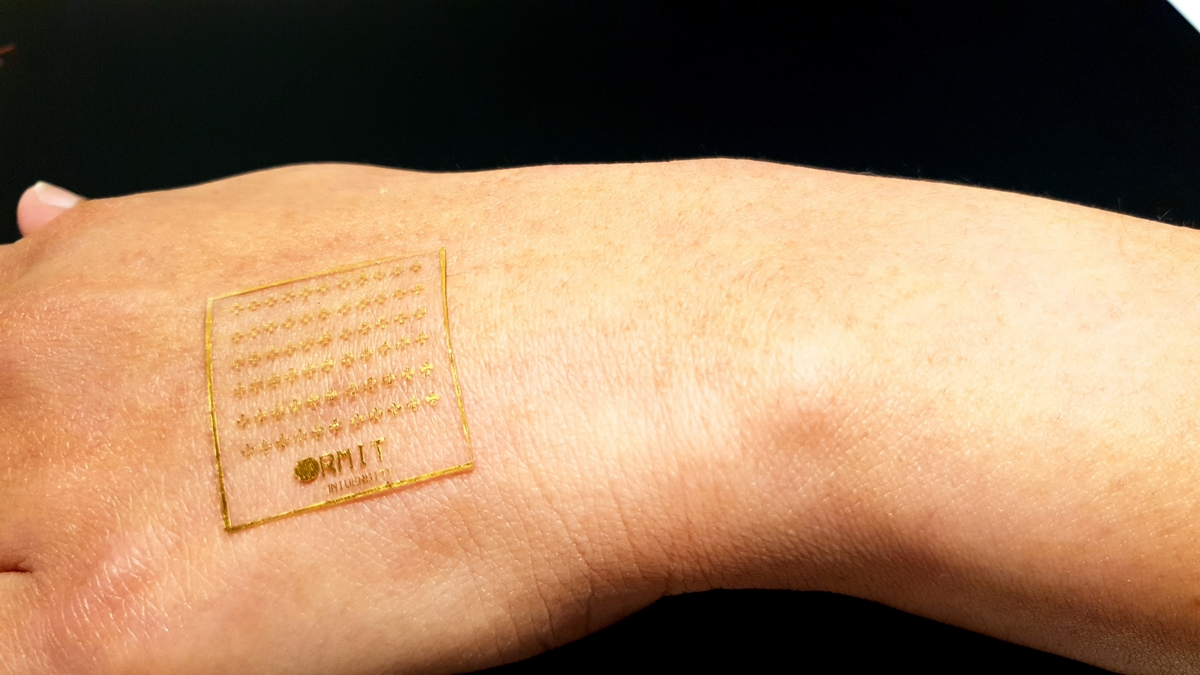Australian scientists have cracked the code, developing an electronic skin that can feel pain, heat and pressure.
The researchers from Melbourne’s RMIT University have developed the prototype to mimic real human skin in the hope it could work as a viable alternative to invasive skin grafts and prosthetics.
The findings, which have been published in Advanced Intelligent Systems, show the device was able to distinguish between different levels of pain, as well as changes in pressure and temperature.
Professor Madhu Bhaskaran, the study’s lead researcher, said the body’s pain receptors work as a network of small electrical signals and the electronic skin simply mimicked them.
“The innovation with this electronic skin is combining soft electronics with brain-mimicking electronics. The ‘skin layer’ has sensors built in to detect touch, heat, or pain. When these sensors are activated, the sensation is converted to an electrical signal, which can be transmitted to the central nervous system,” Prof. Bhaskaran explained to Gizmodo Australia.
“Mechanically, the layer is similar to skin, and would get cut or pierced like human skin. Presently, the sensors are in specific locations and if the cut happens in those locations it would be detected,” Prof. Bhaskaran said.
The skin contains three primary components to make it all happen — a stretchable skin-like material to make it wearable, a temperature-reactive coating to detect hot and cold and finally, brain-mimicking cells that retain memories.

Together they work to tell the brain whether someone is softly touching the electronic skin or poking it with a pen.
It’s a discovery that was long thought to have been possible but hadn’t yet been achieved.
Electronic skin that can be customised for any situation
While the breakthrough could help improve those with prosthetic limbs or skin grafts, the potential real-world applications could extend beyond that.
Right now, Prof. Bhaskaran explained the skin is rubber-like and akin to a wearable smart patch. While the miniature chips — the pain sensors — embedded in the material are hard and less skin-like, Prof. Bhaskaran maintained future versions could be manufactured to be entirely soft and could even match a user’s skin pigmentation.
The sensitivity of its pain receptors could also be tweaked. A user could turn up or down how receptive the skin is — a particularly useful feature that could help surgeons during important operations.
“The brain-mimicking electronics determine a ‘threshold’ which governs sensitivity. This threshold can be controlled or programmed,” Prof. Bhaskaran said.
“So, a person can ‘turn down’ sensitivity. Alternatively, one can ‘turn up’ sensitivity for response prosthetics or towards technologies that require precise touch and feel — like wound management or smart gloves for surgeries.”
For now, the technology is in its infancy. It’s baby steps to get the device done right but the prototype has been patented with the hope it can be commercialised in the near future.
“The immediate next steps would be the realisation of a completely stretchable and skin-like platform – this is achievable within a year,” Prof. Bhaskaran said.
With the foundations set in place, it’s only a matter of time before the stuff of science fiction once again becomes reality.
[related_content first=”1224231″]
